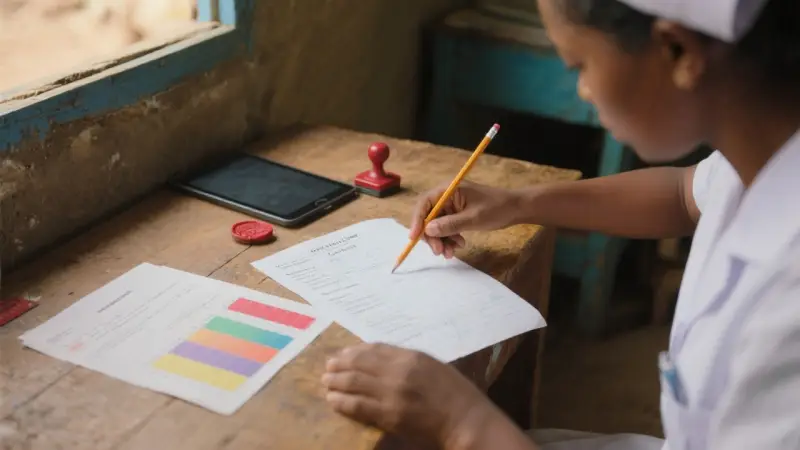
Empowering Community Health Workers with Data
August 14, 2025
3 min read 465 wordsCommunity health workers (CHWs) are the backbone of many systems. Data should help them, not slow them. Start by agreeing on outcomes that matter to families and programs; the checklist in choosing outcomes that matter helps keep focus. Where CHWs trigger outreach or follow‑ups, align lists and scripts with the principles in AI for population health management so tasks are relevant, fair, and sized to capacity.
Design principles: simple, offline, respectful
- Offline‑first: capture works without signal; sync later.
- Short forms: only what’s needed to guide action and track outcomes.
- Clear cues: structured checklists and reminders in plain language.
- Privacy: minimize sensitive fields; support aliases; protect location data.
What to capture and why
Collect only fields that drive decisions or outcomes:
- Contact and consent preferences; language and interpreter need
- Pregnancy status, postpartum timing, danger signs
- Chronic disease flags; medication possession; adherence barriers
- Social supports: transport, food, housing; referral acceptances
- Outcome codes: reached/scheduled/declined/urgent; follow‑up dates
Publish definitions and reasons in plain English. If data feed program evaluations, orient teams with real‑world evidence in healthcare decision‑making and maintain basics from EHR data quality for real‑world evidence.
Tools that work in the field
- Checklists and prompts keyed to local protocols (danger signs, referral criteria)
- Simple registries with capacity‑matched follow‑up lists
- Quick dashboards with headlines (“Timely day‑10 postpartum BP checks rose from 42% to 67%”) and owners—borrow framing from dashboards for public health leaders
- Shared calendars and route plans that minimize travel
Training and support
Practice scripts that center dignity and autonomy. For reproductive health, align counseling with AI‑supported contraceptive counseling. Provide refresher sessions; create rapid feedback channels for broken forms or data issues; and celebrate improvements with simple visuals.
Equity and safety
Monitor coverage and outcomes by language, age, and neighborhood. If certain groups receive fewer visits or slower follow‑up, investigate and adjust. Build IPV screening and referral pathways into tools and scripts.
Case vignette: postpartum support routes
Context: CHWs support postpartum families across dispersed communities.
- Tools: a registry filtered to high‑risk families; interpreter‑first outreach lists; route plans that group nearby visits.
- Scripts: supportive calls and home‑visit checklists; opt‑in SMS reminders for BP checks.
- Results: day‑10 BP completion rises to 67%; urgent referrals decrease as same‑day checks catch issues earlier.
Common pitfalls (and fixes)
- Long forms no one can finish → trim to essentials that drive action.
- Dashboards that don’t help CHWs → show only what guides routes and follow‑ups.
- Sensitive data collected “just in case” → minimize and explain why it’s needed.
- No feedback channel → set up a simple hotline or chat for fixes.
Implementation checklist
- Freeze a minimal field set with plain reasons.
- Deploy offline‑first apps with structured checklists and prompts.
- Build capacity‑matched registries and simple dashboards with owners.
- Train on scripts that center dignity; add interpreter support.
- Monitor equity and safety; adjust routes and scripts accordingly.